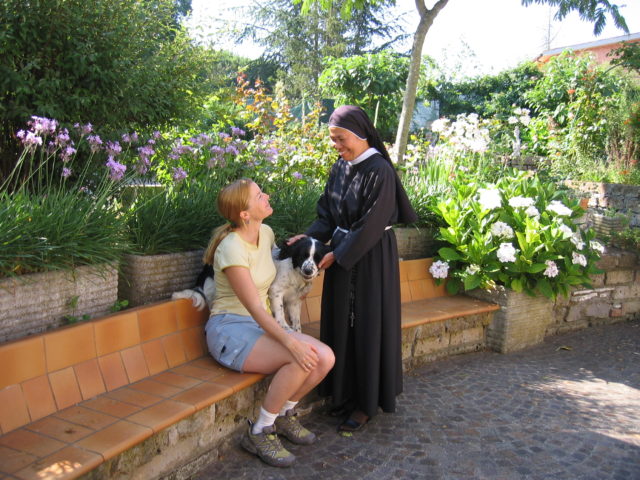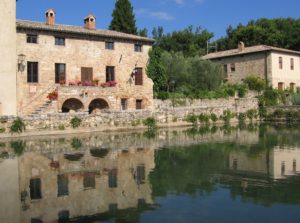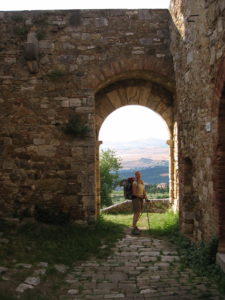
Deep in the summer of 2008, Chandi Wyant was in the middle of a divorce when her appendix ruptured. She was also in the middle of Italy, alone.
It was the second day of her trip.
She spent three weeks in a hospital in Florence, sharing a room with six other patients, unable to walk, fighting off sepsis-induced pneumonia. It was noisy and Wyant slept little, but she was grateful — even without insurance, the hospital treated her at no charge.
After some begging and pleading with her doctor, Wyant got moved out of the hospital and spent another week in a nunnery before the day of her return flight to Denver arrived. The mere thought of traveling was exhausting, but Fate was offering no breaks.
Though her doctor provided documentation about her fragile condition, Wyant says United Airlines refused to push back her return flight, so she traveled back to Colorado, alone.
With her husband gone and no family in the state, Wyant was left to care for herself. Mundane tasks were exercises in both mental and physical strength, and though she had friends to talk to and lean on when times were especially hard, she found herself at “rock bottom for a couple of months.”
Even so, tribulations have a way of giving birth to fresh perspectives, and with time Wyant began to see her future again, and it led back to the country her heart has long called home.
“It wasn’t a surprise to me that Italy came up, but I was surprised the message came to me to walk across Italy,” she says.
And that’s how Wyant came to spend 30 days walking 264 miles on the Via Francigena, a medieval pilgrimage trail from Canterbury, England, through France and Switzerland, to Rome. Earlier this year she put her experience into a book, Return to Glow: A Pilgrimage of Transformation in Italy.
• • • •

Wyant’s love affair with Italy began when she was 19, after a female friend invited her on a backpacking trip around Europe.
“I had no concept of solo travel,” Wyant admits. “This was in the ’80s before the online world. You had to know another woman who had solo traveled [to get advice]. Now the internet is awash with blog after blog saying, ‘Rah rah! You can do it!’ We didn’t even have guides; we didn’t have mentors or examples.”
On her first day in Italy, Wyant “felt more me, more at home than I ever had.”
But Italy was just the beginning.
The two young women traveled together for four months before Wyant’s friend had to return to the States for work. Wyant, however, wasn’t ready to go home.
“I started solo traveling at that point,” she says. “Bizarrely, we split up in Istanbul, which was the most foreign city I’d ever been to.”
She got lost twice in her first 24 hours and found help from local men.
“I realized then that the world isn’t the scary, dangerous place that the American media often told us it is,” she says.
Then and there Wyant defined guidelines for her future travels; she vowed to rid her mind of the voices of the media; to carry the idea that people are good; and to embrace the world in the hope that “it will embrace me back.”
“After that first trip I really had the bug,” Wyant says. “I went back to Santa Cruz, California, where I’m from and completed college. I didn’t even go through the graduation ceremony.”
Instead, she and her boyfriend at the time traveled through Europe, India and even Siberia for a year and a half.
Back in the U.S., she eventually picked up a master’s degree in Florentine Renaissance, learned Italian, got married, lived in Silicon Valley for a bit and finally settled with her husband in Boulder. She taught history at Front Range Community College, in part to help young minds view the world in a more nuanced way.
But after a decade, Wyant found her marriage crumbling. As the pieces of her life fell away, she turned to her first love, Italy, to regroup.
• • • •

When Wyant first arrived in Tuscany, she, and the doctor she saw, thought she’d contracted a virus, but within a few hours she was suddenly and immediately faced with a life-or-death situation.
Recovery was made even harder as she faced her divorce.
“It was this double whammy because the divorce was more painful than I anticipated and then there was this incredibly weakened physical state,” Wyant says. “Trauma stays in your body and you don’t realize how much it affects you. That kind of made the divorce stuck in my body as well. I couldn’t release things.”
She continued to feel this sensation of treading emotional water as she tried to heal at home in Colorado. It took about a year before Wyant made the decision to walk across Italy.
“I didn’t know about the pilgrimage route,” she says. “I thought about going from the West to the East, but I couldn’t quite put it together in my head how that would work: How do I know where to go? If there’s no route it makes no sense. I kept pushing it aside, [thinking] ‘you’ve gotta get a job, you’ve gotta be practical.’ I had to work through that and learn about following my heart and not my head. My head has always gotten in the way.”
She turned to a forum called Slow Travel to query the group about walking through Italy — Wyant says they were “horrified” by the notion — and finally a woman told Wyant about the Via Francigena.
Many folks have heard of the Camino de Santiago pilgrimage trail in Spain while being wholly unfamiliar with the Via Francigena (though that seems to be changing). These are holy paths leading to the final resting places of great saints, often taken by members of the clergy, sometimes as a way of paying penance for past sins.
The Italian route is based off of the diary of Sigeric the Serious (seriously), who in A.D. 990 was made Archbishop of Canterbury and had to travel to Rome to receive a holy garment known as the pallium.
The entire Via Francigena, from Canterbury to St. Peter’s in Rome, is around 1,300 miles (2,083 kilometers). Wyant wasn’t about to take that on — it takes about four months. She was prepared, however, to trek most of the Italian part of the route, which starts at the Gran San Bernardo Pass near the Swiss border. Since that portion of the trail is often closed until June because of snow, Wyant launched her late-May trek further south in Fidenza, a town just north of Parma in the Emilia-Romagna region.
It was 2009, just less than a year after her appendix ruptured.
She planned to walk for 40 days — a number with great significance in the Hebrew Bible.

Wyant learned a lot and she learned it fast. The hybrid sandals and lightweight trail shoes that had served her well on the soft mountain trails in Colorado and California were ill-suited for the paved roads she was walking on the Via Francigena. Her 19-pound pack was far too heavy. Things got easier when she dropped six pounds from the pack.
Some days Wyant was exhausted and hitched rides into the nearest town to rest. She was slowly but surely developing plantar fasciitis, an inflammation of the tissue that runs from the heel to the toes. The pain was unbearable.
She felt guilt about having to take rides, but that subsided when she bumped into a Dutch couple on the route who were also taking rides from time to time when the exhaustion was overwhelming. That’s when Wyant says she learned the real meaning of pilgrimage.
“Everyone’s pilgrimage is their own. It’s not so much that you’re walking the whole time, it’s that you’re releasing what you need to release, you’re tuning in more, you’re listening.”
At the end of 30 days, Wyant knew it was time to end her pilgrimage. She’d walked 264 miles.
Wyant left Boulder for her native California soon after her journey. She knew it wasn’t her last dance with Italy.
In the early spring of this year, Wyant moved to the Italian countryside, near Lucca, where she’s leading two-day walks on the “prettiest part” of the Via Francigena in Tuscany and blogging about how to move to Italy.
Visit www.paradiseofexiles.com for more about Chandi Wyant or to purchase her book, Return to Glow: A Pilgrimage of Transformation in Italy.














